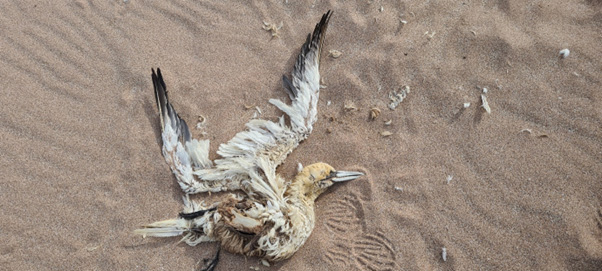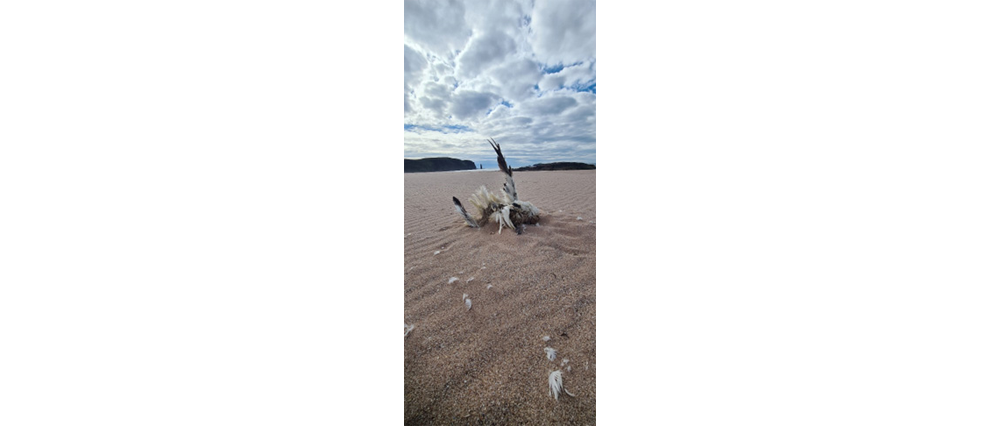Field Notes: Counting feathers across the sand
Sandwood Seasonal Ranger Lynn Munro reports on the sad impact of avian flu on her patch.

Everyday more visitors come to explore and experience the landscapes and seascapes of the Northwest. Regardless of their age, culture and life experiences I have found they all share heartache, sadness, shock and empathy towards the plight of our coastal sea birds.
Walking the shores this season and counting feathers in the sand has added weight to my ranger walks. I feel the urgency of change in our wild places so much more through the visible death of sea birds held in wind-blown sands. I have seen dead puffins, gannets, guillemets and great black back gulls this summer, with most visitors reporting seeing dead northern gannets.

The devastating effect that the highly pathogenic avian influenza (HPAI) virus is having on wild birds is a poignant reminder of just how vulnerable our biodiversity is. I have stood next to decaying birds and watched the feathers fly in the breeze. They offer a lightness in their symbolism and a potential to dream a new flight we must all engage in.
The breeding bird season is nearing its end and those that survive will soon depart our shores once again. We will not know the full effect until next year’s birds return and population counts are made. For now we can record, report and do our part to avoid direct contact and disturbance, to help ease the spread. We can consider how we manage our domesticated birds and remain vigilant.
As seasonal ranger at Sandwood it is my job to engage visitors and locals in a wild place, yet we stand together feeling helpless as more birds wash ashore. I may have heavier shoulders this season, but I continue to step towards hope. The empathy I hear from visitors highlights care to me and I step lighter knowing that when we care deeply for something we are more likely to act to protect that place or species.
By strengthening our compassion, we give fuel to our courage and determination.
Joanna Macy and Chris Johnstone, Active Hope.
How to spot avian flu and what to do
The highly pathogenic avian influenza (HPAI) virus is a more serious type of bird flu and is often fatal in birds. Some of the main symptoms that will show an infected bird include:
• swollen head
• closed and excessively water eyes
• incoordination and loss of balance
• head and body tremoring
• drooping of the wings and or dragging of the legs
• several birds affected in the same space.
The Animal and Plant Health Agency (APHA) carries out year-round avian influenza surveillance of dead birds submitted via public and ranger/warden patrols.
Please do not touch or pick up any sick or dead birds. Call the Defra helpline (03459 33 55 77) if you see:
• one or more dead bird of prey, or owl
• three or more dead gulls, or wild waterfowl (geese, swans and ducks)
• five or more dead birds of any species.
Not all birds are collected and tested, but this can give a picture of the geographical spread of disease.
- Read more about how bird flu is affecting Scottish sea birds on RSPB's website.
Photos by Lynn Munro show a northern gannet, identifiable by its bright white plumage, long neck and beak, and distinctive black wing tips. Northern gannets come to Scotland to nest and breed.

